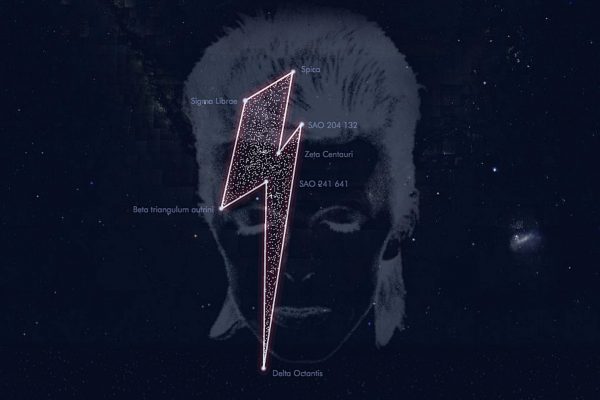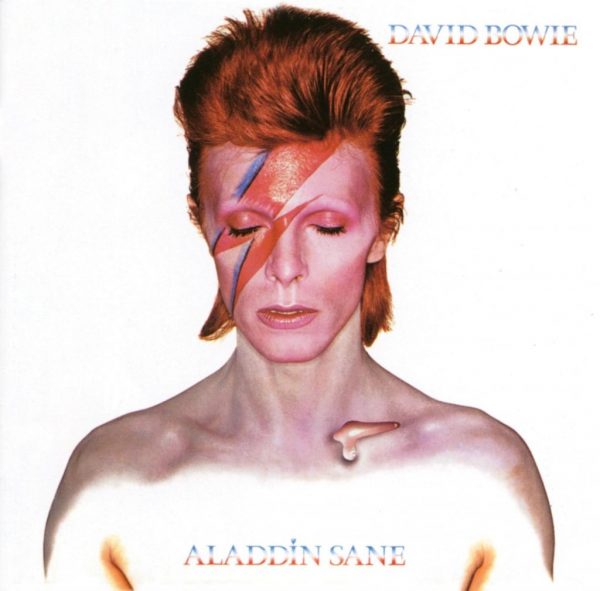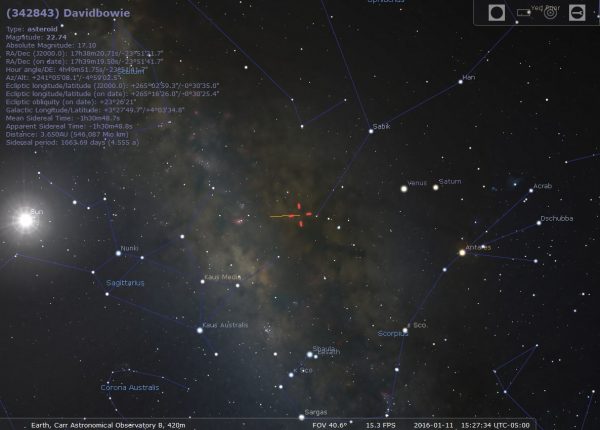A Constellation named for David Bowie – Maybe Not?

There is only one official body that can name constellations and that is the International Astronomical Union, which is the official naming body of scientists. Our skies have already been divided into 88 constellations with well-defined celestial borders than span the entire celestial sphere.
The seven stars that form the lightning pattern from Bowie’s album is an asterism which astronomers call a set of stars that form a pattern familiar to the human eye as part of a larger group of stars and are not a constellation.
This can represent a part of a single constellation or multiple constellations. Bowie’s asterism is made up of stars from the constellations Libra, Virgo, Centaurus, and Triangulum Australe.

He appeared on the cover of the 1973 album Aladdin Sane with a red and blue lightning bolt painted on one side of his face. One can see a few obvious differences in the depiction by the fans but I guess the thought is there…..
Other famous examples of asterisms include the Pleiades or Seven Sisters, and the Trapezium Cluster in Orion. However, there is one lasting astronomical tribute to Bowie that may stand the test of time.
Asteroid 2008 YN3, also called 342843 Davidbowie is an asteroid in the main asteroid belt which was first observed in 2003, but not identified as a new asteroid until 2008. Credit for the discovery goes to F. Hormuth, working at the Calar Alto Observatory in Spain. It was named for musician and actor David Bowie on 5th January 2015, just 3 days before Bowie’s 68th birthday.
It is about a mile across, has an orbital period of about 4.5 years, and an absolute magnitude of 17.1. The asteroid belt is full of billions of pieces of rock and debris leftover from the early formation of our solar system, some 4.6 billion years ago. It’s likely the result of a failed planet.

Now, don’t rush out to find 342843 Davidbowie just yet. This piece of space rock can be found between the constellations Sagittarius and Scorpius but the Bowie asteroid is too faint to be seen even by backyard telescopes, But next time you look up into the night sky, it’s kind of nice to think that the singer who brought us Space Oddity, Ziggy Stardust and Starman could be out there among the stardust.





